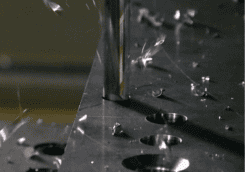Tapping is a machining process used to create internal threads in pre-drilled holes so a bolt or cap screw can be threaded into it. It is also used to make the thread on nuts. It involves the use of a cutting tool called a tap, which removes material from the hole to form the threads. Tapping is a versatile process with numerous applications across various industries.
Tapping is essential for creating threaded connections that allow components to be joined together. It can create threads of various sizes, pitches, and designs. You can find more information on the different methods of tapping here: It is a relatively quick process, especially when compared to alternative methods such as manual threading.

The process can be automated using electric tapping machines which offer speed, efficiency, and consistency, making them ideal for high-volume production of components that require internal threads. Electric tapping machines are versatile and can be used with different materials, including metals, plastics, and composites. This makes them suitable for a wide range of applications.
What are tapping machines used for?
Electric tapping machines are used in metalworking and machining industries. They are used to create threads in metals such as steel, aluminium, brass, and other alloys. Tapping machines ensure accurate thread depths and help maintain consistent thread quality.
These machines are also crucial in the automotive and aerospace industries, where accuracy is of the utmost importance. They are used to create threads in engine components, transmission parts, aircraft structures, and other critical components that require secure and reliable threaded connections. In various fabrication and assembly processes, electric tapping machines are used to create threads in metal frames and other fabricated parts.

The key benefits of electric tapping machines
Electric tapping machines offer several advantages over manual tapping, such as increased speed, precision, and reduced operator fatigue. They are designed to accommodate different thread sizes, hole depths, and materials, making them versatile and adaptable to various applications.
These machines play a critical role in improving productivity, ensuring thread quality, and streamlining the manufacturing and assembly processes that rely on threaded connections.
